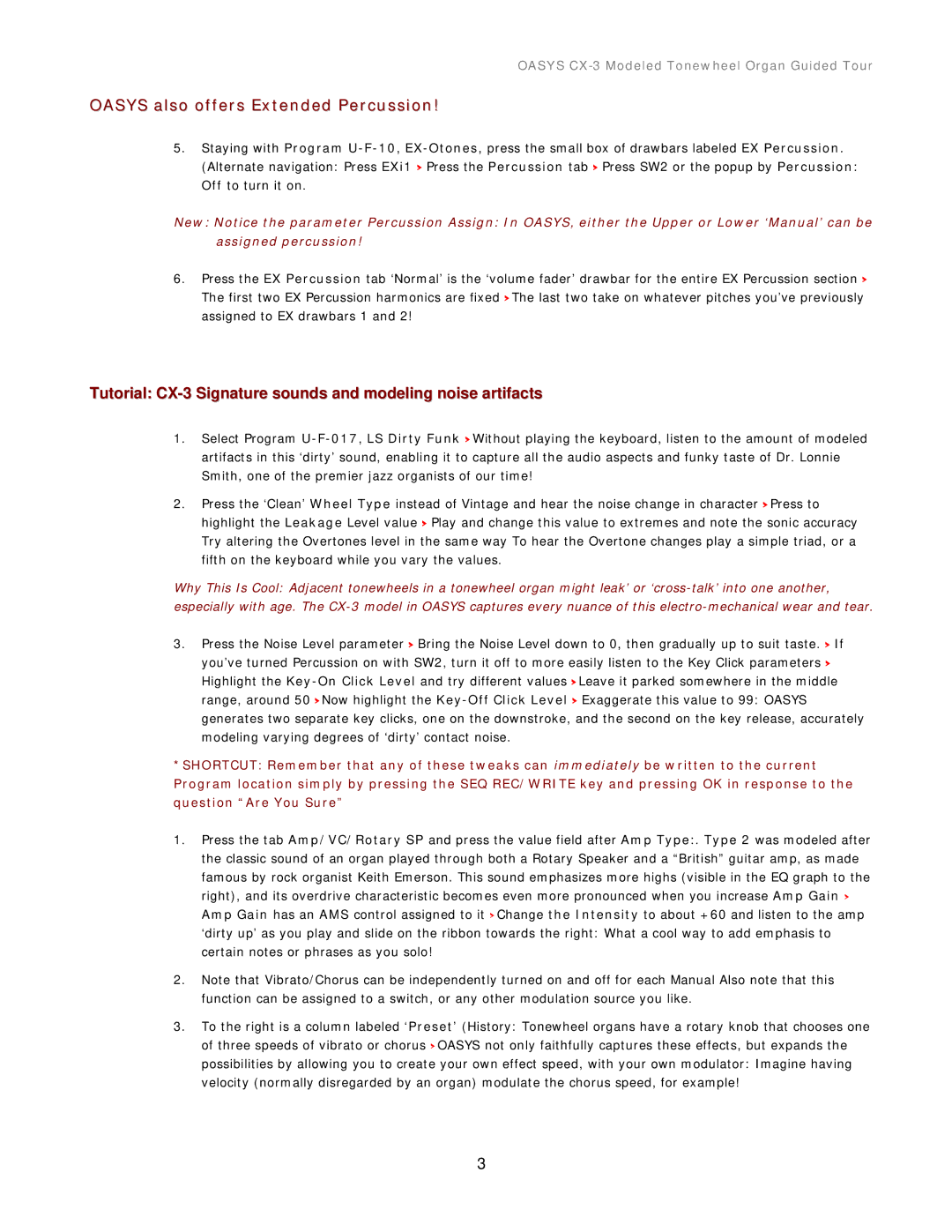OASYS
OASYS also offers Extended Percussion!
5.Staying with Program
New: Notice the parameter Percussion Assign: In OASYS, either the Upper or Lower ‘Manual’ can be assigned percussion!
6.Press the EX Percussion tab ‘Normal’ is the ‘volume fader’ drawbar for the entire EX Percussion section > The first two EX Percussion harmonics are fixed > The last two take on whatever pitches you’ve previously assigned to EX drawbars 1 and 2!
Tutorial: CX-3 Signature sounds and modeling noise artifacts
1.Select Program
2.Press the ‘Clean’ Wheel Type instead of Vintage and hear the noise change in character > Press to highlight the Leakage Level value > Play and change this value to extremes and note the sonic accuracy Try altering the Overtones level in the same way To hear the Overtone changes play a simple triad, or a fifth on the keyboard while you vary the values.
Why This Is Cool: Adjacent tonewheels in a tonewheel organ might leak’ or
3.Press the Noise Level parameter > Bring the Noise Level down to 0, then gradually up to suit taste. > If you’ve turned Percussion on with SW2, turn it off to more easily listen to the Key Click parameters > Highlight the
*SHORTCUT: Remember that any of these tweaks can immediately be written to the current Program location simply by pressing the SEQ REC/WRITE key and pressing OK in response to the question “Are You Sure”
1.Press the tab Amp/VC/Rotary SP and press the value field after Amp Type:. Type 2 was modeled after the classic sound of an organ played through both a Rotary Speaker and a “British” guitar amp, as made famous by rock organist Keith Emerson. This sound emphasizes more highs (visible in the EQ graph to the right), and its overdrive characteristic becomes even more pronounced when you increase Amp Gain > Amp Gain has an AMS control assigned to it > Change the Intensity to about +60 and listen to the amp ‘dirty up’ as you play and slide on the ribbon towards the right: What a cool way to add emphasis to certain notes or phrases as you solo!
2.Note that Vibrato/Chorus can be independently turned on and off for each Manual Also note that this function can be assigned to a switch, or any other modulation source you like.
3.To the right is a column labeled ‘Preset’ (History: Tonewheel organs have a rotary knob that chooses one of three speeds of vibrato or chorus > OASYS not only faithfully captures these effects, but expands the possibilities by allowing you to create your own effect speed, with your own modulator: Imagine having velocity (normally disregarded by an organ) modulate the chorus speed, for example!
3
